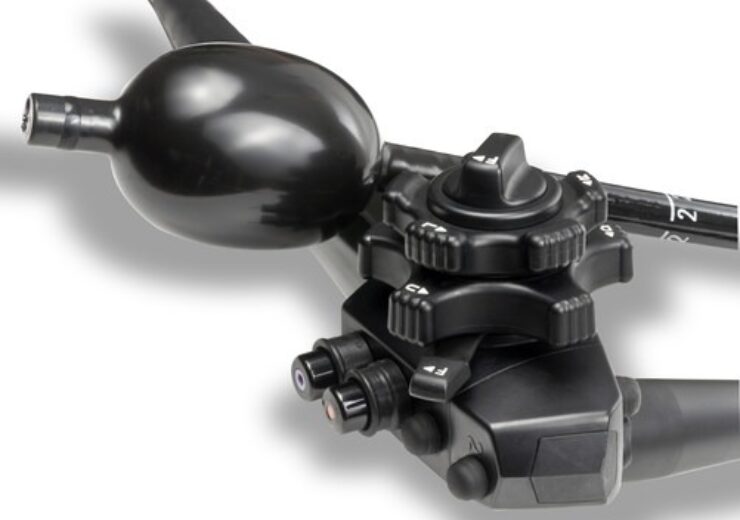The study showed superior ADR with G-EYE balloon, predominantly for advanced and large adenomas, compared to ECV attachment

The G-EYE Colonoscope. (Credit: Smart Medical Systems Ltd.)
SMART Medical Systems announced that its FDA-approved G-EYE balloon technology showed superior results in a clinical trial, compared to Endocuff Vision (ECV) technology.
The study compared adenoma detection rate (ADR) in patients undergoing colonoscopy screening, from both the mechanical enhancement devices.
In the study results, the G-EYE balloon showed superior ADR, predominantly for advanced and large adenomas, compared to ECV attachment.
The company claims that it is the first head-to-head comparison of the two colonoscopy mechanical enhancement devices.
SMART Medical chief executive officer Gadi Terliuc said: “The effect of the G-EYE balloon is notable, and I expect it to become a standard tool, over time, for every colonoscopy.
“These new data add to the growing body of clinical evidence demonstrating that G-EYE provides endoscopists with increased diagnostic yield, and we are gratified that the ACG has recognised the importance of these findings by selecting this abstract for the Outstanding Research Award in the colon cancer prevention category.”
Colonoscopy is the gold standard for colorectal cancer (CRC) prevention; however, folds within the colon may bear adenomas that cannot be visible during the exam.
Both G-EYE and ECV technologies are designed to aid the colonoscopy by mechanical manipulation. They increase colon surface area exposure, to increase ADR.
According to previous clinical studies and analyses, G-EYE has increased adenoma detection compared to standard colonoscopy and other techniques.
The current study enrolled 935 patients with similar characteristics, randomised to receive either G-EYE- or ECV-assisted colonoscopy.
The study showed that G-EYE technology resulted in an 18% increase in the overall ADR, and a 69% increase in ADR of advanced adenomas, compared to ECV.
Also, the device has supported the detection of additional 83% large adenomas and 87% advanced adenomas, compared to ECV.
Study co-author Seth Gross said: “The data presented at ACG 2021 demonstrate that exposing more colonic topography using the G-EYE increased adenoma detection compared with the colonic fold manipulation provided by the ECV colonoscope attachment.
“Increasing the detection of adenomas, particularly advanced and large adenomas is critical for the role of colonoscopy as a CRC prevention tool.”
